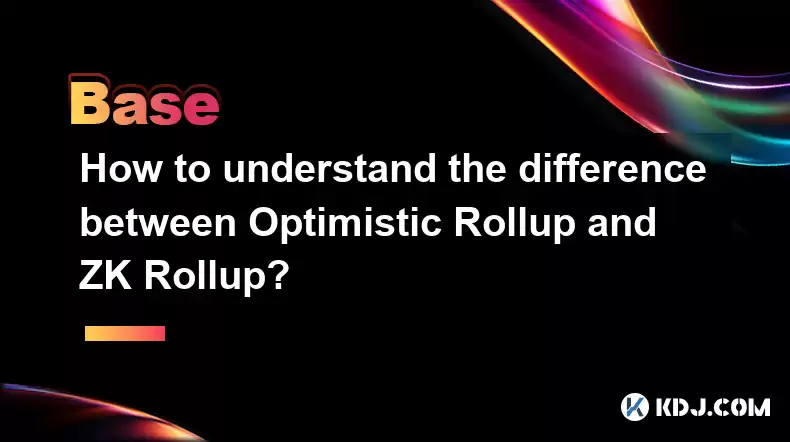-
 Bitcoin
Bitcoin $115200
-2.68% -
 Ethereum
Ethereum $3601
-5.16% -
 XRP
XRP $3.035
-2.96% -
 Tether USDt
Tether USDt $0.9997
-0.04% -
 BNB
BNB $764.5
-5.43% -
 Solana
Solana $168.1
-5.92% -
 USDC
USDC $0.9998
-0.02% -
 Dogecoin
Dogecoin $0.2090
-4.80% -
 TRON
TRON $0.3272
-0.49% -
 Cardano
Cardano $0.7306
-5.00% -
 Hyperliquid
Hyperliquid $39.16
-12.22% -
 Stellar
Stellar $0.3967
-4.96% -
 Sui
Sui $3.566
-5.95% -
 Chainlink
Chainlink $16.55
-6.57% -
 Bitcoin Cash
Bitcoin Cash $552.3
-3.90% -
 Hedera
Hedera $0.2516
-4.69% -
 Avalanche
Avalanche $21.99
-5.75% -
 Toncoin
Toncoin $3.621
-0.28% -
 Ethena USDe
Ethena USDe $1.000
-0.03% -
 UNUS SED LEO
UNUS SED LEO $8.951
0.02% -
 Litecoin
Litecoin $105.9
-3.59% -
 Shiba Inu
Shiba Inu $0.00001232
-5.00% -
 Polkadot
Polkadot $3.640
-5.55% -
 Uniswap
Uniswap $9.048
-7.03% -
 Monero
Monero $301.8
-1.51% -
 Dai
Dai $0.9999
-0.01% -
 Bitget Token
Bitget Token $4.334
-3.66% -
 Pepe
Pepe $0.00001064
-6.17% -
 Cronos
Cronos $0.1367
-5.78% -
 Aave
Aave $259.2
-4.59%
How to understand the difference between Optimistic Rollup and ZK Rollup?
Optimistic Rollup assumes transaction validity for high throughput, while ZK Rollup uses zero-knowledge proofs for instant finality and privacy, impacting scalability and user experience.
Apr 22, 2025 at 09:22 pm

Understanding the difference between Optimistic Rollup and ZK Rollup is essential for anyone interested in the scalability solutions within the cryptocurrency and blockchain space. Both technologies are designed to enhance the efficiency and capacity of blockchain networks, particularly Ethereum, but they operate on fundamentally different principles. In this article, we will explore these two rollup technologies in detail, highlighting their mechanisms, advantages, and potential drawbacks.
What is an Optimistic Rollup?
Optimistic Rollup is a layer 2 scaling solution that operates on the principle of optimism—assuming that transactions are valid unless proven otherwise. This approach allows for faster transaction processing because it does not require immediate validation of each transaction on the main blockchain.
Mechanism: In an Optimistic Rollup, transactions are batched together and processed off-chain. These batches are then submitted to the main blockchain as a single transaction. The rollup maintains a state that can be challenged if a user believes a transaction is fraudulent. If no challenge is made within a specified period, known as the challenge period, the transactions are considered valid and finalized on the blockchain.
Advantages: The primary advantage of Optimistic Rollup is its high throughput. By assuming transactions are valid, it can process a large number of transactions quickly. Additionally, it is relatively easier to implement compared to other scaling solutions, as it does not require complex cryptographic proofs.
Drawbacks: The main drawback is the delay in finality. Because transactions can be challenged, users must wait for the challenge period to end before their transactions are considered final. This can lead to a longer wait time for transaction confirmation. Additionally, if a fraudulent transaction is detected, the process of resolving it can be complex and time-consuming.
What is a ZK Rollup?
ZK Rollup, or Zero-Knowledge Rollup, is another layer 2 scaling solution that uses zero-knowledge proofs to validate transactions. Unlike Optimistic Rollup, ZK Rollup does not assume transactions are valid; instead, it provides cryptographic proof that the transactions are correct.
Mechanism: In a ZK Rollup, transactions are also batched together and processed off-chain. However, before these batches are submitted to the main blockchain, a zero-knowledge proof is generated to prove the validity of the transactions. This proof is then submitted to the blockchain, allowing for immediate validation and finality of the transactions.
Advantages: The primary advantage of ZK Rollup is instant finality. Because the transactions are validated with cryptographic proofs, there is no need for a challenge period, and transactions are considered final as soon as they are included in a block. Additionally, ZK Rollup provides enhanced privacy because the details of the transactions are not revealed on the blockchain, only the proof of their validity.
Drawbacks: The main drawback of ZK Rollup is its complexity. Generating zero-knowledge proofs requires significant computational resources, which can lead to higher costs and slower transaction processing compared to Optimistic Rollup. Additionally, the technology is still relatively new and less widely adopted, which can limit its availability and support.
Comparing Transaction Throughput
When comparing the transaction throughput of Optimistic Rollup and ZK Rollup, it is important to consider their different approaches to validation.
Optimistic Rollup can achieve higher throughput because it does not require immediate validation. It can process thousands of transactions per second, making it a popular choice for applications that require high transaction volumes.
ZK Rollup, on the other hand, has a lower throughput due to the computational overhead of generating zero-knowledge proofs. However, it still offers significant improvements over the main blockchain, typically processing hundreds of transactions per second.
Security and Trust Assumptions
The security models of Optimistic Rollup and ZK Rollup differ significantly, impacting the level of trust required from users.
Optimistic Rollup relies on the assumption that most transactions are valid and that fraudulent transactions will be caught and challenged. This means that users must trust the system to detect and resolve any fraudulent activity within the challenge period. If a fraudulent transaction goes undetected, it could lead to significant issues.
ZK Rollup provides a higher level of security because it does not rely on assumptions about transaction validity. The zero-knowledge proofs ensure that transactions are valid without revealing any sensitive information. This reduces the trust required from users, as the security is based on cryptographic guarantees rather than the honesty of participants.
Use Cases and Adoption
The choice between Optimistic Rollup and ZK Rollup often depends on the specific use case and the priorities of the application.
Optimistic Rollup is well-suited for applications that require high throughput and can tolerate a delay in finality. It is widely adopted in the DeFi space, where large volumes of transactions need to be processed quickly. Examples of projects using Optimistic Rollup include Arbitrum and Optimism.
ZK Rollup is ideal for applications that require instant finality and enhanced privacy. It is particularly useful for financial applications where transaction privacy is crucial. Projects like Loopring and StarkWare are examples of ZK Rollup implementations.
Implementation and Technical Considerations
Implementing either Optimistic Rollup or ZK Rollup requires careful consideration of technical and operational aspects.
Optimistic Rollup is generally easier to implement because it does not require the complex cryptographic infrastructure needed for zero-knowledge proofs. Developers can focus on building the off-chain transaction processing system and the challenge mechanism. However, they must ensure that the system can handle potential challenges and disputes effectively.
ZK Rollup requires a more sophisticated technical setup due to the need for zero-knowledge proofs. Developers must have expertise in cryptography and be able to manage the computational resources required for proof generation. Additionally, they must ensure that the system can scale to handle the increased computational load as transaction volumes grow.
Frequently Asked Questions
Q: Can Optimistic Rollup and ZK Rollup be used together in a single application?
A: Yes, it is possible to use both Optimistic Rollup and ZK Rollup within the same application, depending on the specific requirements. For example, an application might use Optimistic Rollup for high-volume transactions that can tolerate a delay in finality and ZK Rollup for transactions that require instant finality and enhanced privacy.
Q: How do gas fees compare between Optimistic Rollup and ZK Rollup?
A: Gas fees for Optimistic Rollup are generally lower because the validation process is simpler and does not require the computational resources needed for zero-knowledge proofs. ZK Rollup, on the other hand, can have higher gas fees due to the complexity of generating and verifying proofs. However, both solutions offer significant savings compared to processing transactions directly on the main blockchain.
Q: Are there any regulatory considerations for using Optimistic Rollup or ZK Rollup?
A: Regulatory considerations can vary depending on the jurisdiction and the specific use case of the application. Optimistic Rollup and ZK Rollup are both layer 2 solutions that operate on top of existing blockchains, so they generally fall under the same regulatory framework as the underlying blockchain. However, the enhanced privacy features of ZK Rollup may attract additional scrutiny from regulators concerned about money laundering and other financial crimes.
Q: How do Optimistic Rollup and ZK Rollup impact the user experience?
A: The user experience can vary significantly between Optimistic Rollup and ZK Rollup. Optimistic Rollup may offer a smoother experience for users who are willing to wait for transaction finality, as it can process transactions more quickly. ZK Rollup, on the other hand, provides a more immediate and secure experience, which can be beneficial for users who prioritize transaction finality and privacy.
Disclaimer:info@kdj.com
The information provided is not trading advice. kdj.com does not assume any responsibility for any investments made based on the information provided in this article. Cryptocurrencies are highly volatile and it is highly recommended that you invest with caution after thorough research!
If you believe that the content used on this website infringes your copyright, please contact us immediately (info@kdj.com) and we will delete it promptly.
- Cardano Price, Pi Network, and Crypto Presales: What's the Buzz?
- 2025-08-02 08:50:12
- XRP Fund Success: Teucrium CEO Reveals Trillions on the Horizon
- 2025-08-02 09:10:12
- Challenge Coins: More Than Just Collectibles – A Military Tradition
- 2025-08-02 08:30:12
- Under the Radar: Hunting for 100x Crypto Gems in a Pi Network World
- 2025-08-02 08:30:12
- Bitcoin, Solana, and Altcoin Season: What's Hot and What's Not?
- 2025-08-02 07:10:12
- Toncoin, Rollblock, and the Token Offering Landscape: A New York Minute
- 2025-08-02 07:10:12
Related knowledge

What is the difference between CeFi and DeFi?
Jul 22,2025 at 12:28am
Understanding CeFi and DeFiIn the world of cryptocurrency, CeFi (Centralized Finance) and DeFi (Decentralized Finance) represent two distinct financia...

How to qualify for potential crypto airdrops?
Jul 23,2025 at 06:49am
Understanding What Crypto Airdrops AreCrypto airdrops refer to the distribution of free tokens or coins to a large number of wallet addresses, often u...

What is a crypto "airdrop farmer"?
Jul 24,2025 at 10:22pm
Understanding the Role of a Crypto 'Airdrop Farmer'A crypto 'airdrop farmer' refers to an individual who actively participates in cryptocurrency airdr...

What is the difference between a sidechain and a Layer 2?
Jul 20,2025 at 11:35pm
Understanding the Concept of SidechainsA sidechain is a separate blockchain that runs parallel to the main blockchain, typically the mainnet of a cryp...

What is the Inter-Blockchain Communication Protocol (IBC)?
Jul 19,2025 at 10:43am
Understanding the Inter-Blockchain Communication Protocol (IBC)The Inter-Blockchain Communication Protocol (IBC) is a cross-chain communication protoc...

How does sharding improve scalability?
Jul 20,2025 at 01:21am
Understanding Sharding in BlockchainSharding is a database partitioning technique that is increasingly being adopted in blockchain technology to enhan...

What is the difference between CeFi and DeFi?
Jul 22,2025 at 12:28am
Understanding CeFi and DeFiIn the world of cryptocurrency, CeFi (Centralized Finance) and DeFi (Decentralized Finance) represent two distinct financia...

How to qualify for potential crypto airdrops?
Jul 23,2025 at 06:49am
Understanding What Crypto Airdrops AreCrypto airdrops refer to the distribution of free tokens or coins to a large number of wallet addresses, often u...

What is a crypto "airdrop farmer"?
Jul 24,2025 at 10:22pm
Understanding the Role of a Crypto 'Airdrop Farmer'A crypto 'airdrop farmer' refers to an individual who actively participates in cryptocurrency airdr...

What is the difference between a sidechain and a Layer 2?
Jul 20,2025 at 11:35pm
Understanding the Concept of SidechainsA sidechain is a separate blockchain that runs parallel to the main blockchain, typically the mainnet of a cryp...

What is the Inter-Blockchain Communication Protocol (IBC)?
Jul 19,2025 at 10:43am
Understanding the Inter-Blockchain Communication Protocol (IBC)The Inter-Blockchain Communication Protocol (IBC) is a cross-chain communication protoc...

How does sharding improve scalability?
Jul 20,2025 at 01:21am
Understanding Sharding in BlockchainSharding is a database partitioning technique that is increasingly being adopted in blockchain technology to enhan...
See all articles

























































































